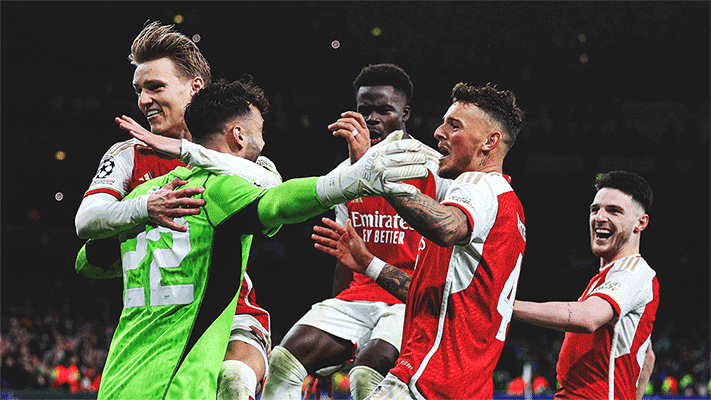Arsene Wenger’s determination to pack the Arsenal side with technical footballers, who are frequently small and slender rather than tall and powerful, has often resulted in a lack of physical strength. “Usually I look at the quality of the player and not at the size,” Wenger once admitted. “Because we play a very technical game, I usually choose smaller players.
The home draw with Manchester City in March, however, showed that Arsenal have developed considerably in this respect. The fixture arguably isn’t the classic ‘physical’ match – it’s hardly Stoke City away – but Manuel Pellegrini’s side boast an array of strong footballers, particularly in central positions.
The likes of Vincent Kompany, Martin Demichelis, Fernandinho and Yaya Toure create a powerful defensive square, allowing more technical players to pivot around them. Statistically, however, Arsenal were extremely impressive in winning aerial duels against them.
There were 49 aerial battles, a surprisingly high number for a contest between two sides who prefer to keep the ball on the ground. Encouragingly, however, Arsenal came out on top – winning the aerial battle 32-17. There were particularly impressive performances in this respect at both ends of the pitch. Manchester City striker Edin Dzeko understandably placed himself up against 6ft Thomas Vermaelen, rather than 6ft 6in Per Mertesacker, when battling for Joe Hart’s long goal kicks.

Per Mertesacker rises above Wilfried Bony
However, Vermaelen wasn’t fazed, and won all seven of his aerial battles against the Bosnian striker, and eight from nine overall. Dzeko only won high balls when he drifted out wider and competed with Kieran Gibbs – and was therefore not competing in a dangerous zone.
It was also impressive that Olivier Giroud won seven of his 13 battles, which might only be a shade over 50 per cent but is a decent ratio for a centre forward. In general, centre backs win the majority of these duels, as they’re in a better position to compete for opposition goal kicks, facing the play and therefore able to get ‘under’ the ball rather than leaping to flick it on or knock it down.
"It was also impressive that Olivier Giroud won seven of his 13 battles, which might only be a shade over 50 per cent but is a decent ratio for a centre forward"
Giroud offers Wojciech Szczesny an out-ball, particularly handy when the opposition press Arsenal at goal kicks. Substitute Yaya Sanogo won four of his seven aerial battles, too, keeping up the ratio.
It meant some of City’s players recorded particularly unimpressive figures – David Silva and Jesus Navas unsurprisingly didn’t win any, but Pablo Zabaleta lost all four battles, James Milner all six, and Toure only two from five. Arsenal battled back into the game primarily because of their technical quality, but also because they could compete in the air.
While this success rate of 65 per cent is particularly high for Arsenal, it might surprise many to learn the Gunners actually boast the second-best aerial success rate in the Premier League.
When sorted by the overall number of aerials won per game, Arsenal’s record isn’t particularly successful – they’re only 10th in this table. However, this is primarily because Arsenal don’t hit the ball long often (they play fewer long passes than any team in the league), and their tendency to control possession means this style influences the type of contest.

Mikel Arteta challenges Mark Noble for a header
Percentage-wise, however, Arsenal are the second most fearsome aerial side in the Premier League. Stoke City, somewhat inevitably, are in first position with a rate of 61 per cent, but Arsenal lead the challengers on 55 per cent. It’s impressive considering other technical sides such as Swansea and Everton are on 43 per cent and 46 per cent respectively. Even a physical side based around winning headers, like Sam Allardyce’s West Ham, manages only 50 per cent.
“The physicality of the English game is one of the attractions of it,” said Wenger last year. “Sometimes I watch foreign games and after 20 minutes I’m bored because every time someone goes down it’s a foul, and you say, ‘Come on. It’s not football.’”
The caricature of Wenger suggests he loathes physical football, but this clearly isn’t true. Similarly, the cliche about Arsenal insists they’re not adept in the air, but the statistics tell an entirely different story.
It’s somewhat unusual to see Stoke and Arsenal statistically similar in any way, but it’s worth remembering that only the Potters win more aerial duels than the Gunners.
Copyright 2025 The Arsenal Football Club Limited. Permission to use quotations from this article is granted subject to appropriate credit being given to www.arsenal.com as the source.











